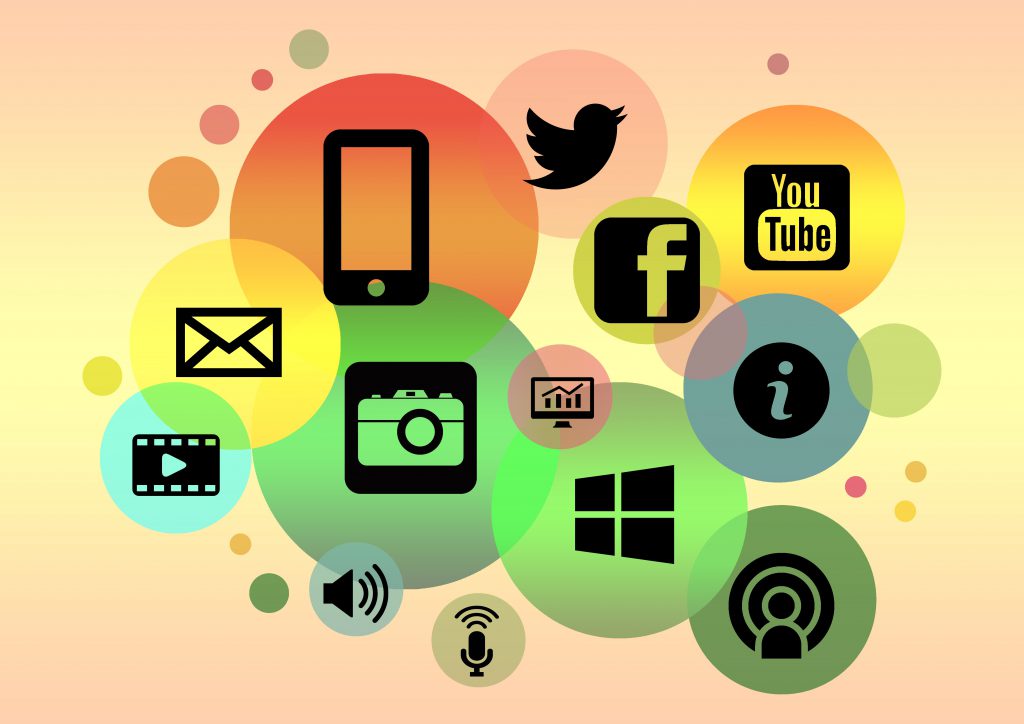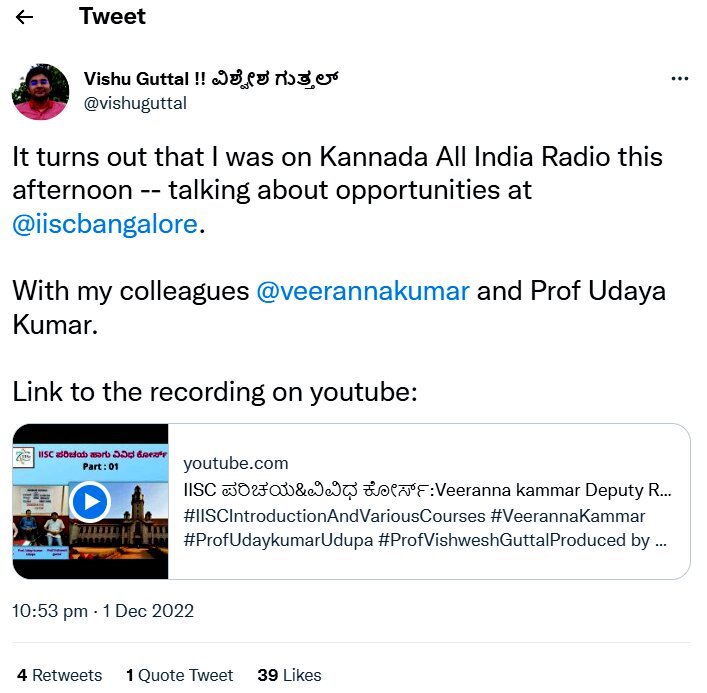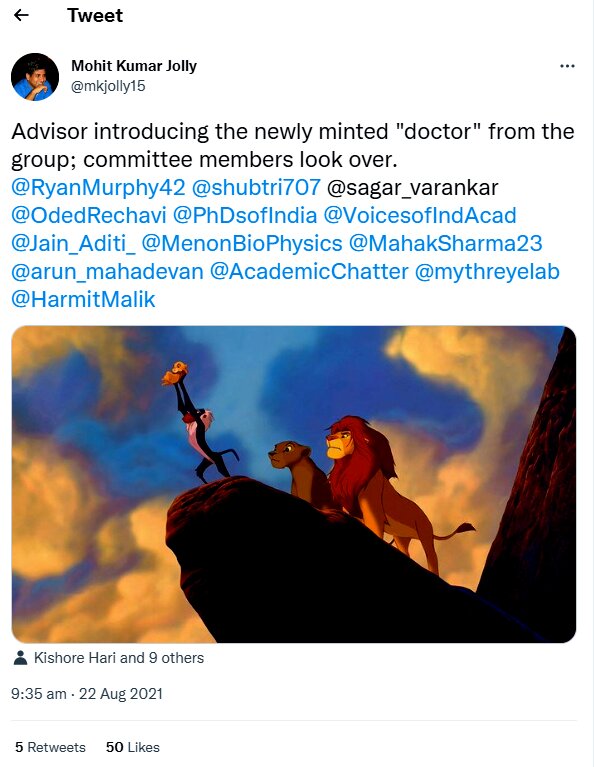Researchers at IISc talk about their social media presence and its influence on their professional lives

There has long been a perception that scientists are reclusive and asocial. However, this stereotype is being challenged by the rising number of them who tweet and post on Facebook and LinkedIn. Scientists today have more opportunities than ever before to use social media to share their work and engage with a global audience. During and post-pandemic, there has been an undeniable surge in the digital presence of science investigators on various social media platforms. They are swarming their feeds with information, actively engaging with the scientific community, facilitating collaborations, and amplifying their social media visibility. “I missed interacting with other scientists during the pandemic, and Twitter felt like a digital corridor,” says Anand Srivastava, Associate Professor at the Molecular Biophysics Unit.
Social media has also brought scientists closer to the public and vice versa. This increased access to science has transformed it from a seemingly esoteric field to something everyone can access and even participate in. However, the scientific community seems to view this change with ambivalence.
Networking and collaboration
Social media platforms are effective ways to stay up-to-date on current literature, upcoming conferences, and professional networking opportunities. Kavita Babu, an Associate Professor at the Centre for Neuroscience, recalls how she joined the bandwagon. “I was organising a meeting on C. elegans in 2018, and a couple of colleagues were tweeting about it. I wanted to see what they were posting, and so I joined Twitter,” she says.
It has become a common practice for scientists to routinely update their Twitter accounts with research progress and findings. Facebook groups are also great for meeting other like-minded people and staying up-to-date on trending topics in science. Anand has benefitted from posting pre-prints of their work on science-related Facebook groups and Twitter, and says that in his experience, such platforms can foster collaborations that might not have been possible before the rise of social media. Preprints also help him stay up-to-date with the field. “In biological sciences, it can take anywhere between 4-12 months or more to get the work out in a journal. By the time the preprints are published in the journal, the work is generally old news,” he explains.
Social media platforms are effective ways to stay up-to-date on current literature, upcoming conferences, and professional networking opportunities
Mohit Kumar Jolly, Assistant Professor at the Centre for BioSystems Science and Engineering, has similar stories to share. “I posted about our recent bioRxiv preprint a few days ago. A colleague from the University of Ottawa came across it and shared one of their research articles with complementary experimental data to support our computational meta-analysis included in that preprint. We are now in talks, exploring common interests for potential collaboration.” According to Anand, there are constructive ways to network despite the term “networking” having had a negative connotation in the past. Mohit, too, believes that academic Twitter is an ecosystem with a critical mass of colleagues and researchers who may be looking for postdocs, collaborations, new positions, and so on. “To expand my horizons, I want to connect to people from inside and outside the field, be it trainees, colleagues at similar career stages, seniors, or officials of different funding agencies,” he states. Vishwesha Guttal, Associate Professor at the Centre for Ecological Sciences also says that his digital presence has facilitated several invitations for academic talks in India and abroad.
Fake news and phoney research
In addition to using social media for developing their network base and facilitating collaborations with scientists around the world, researchers use it to share the nitty-gritty of their work and research interests with the public. However, unlike peer-reviewed publications, social media content is not screened or vetted by anyone, allowing false or misleading information to spread just as easily as accurate information. This glut of easily accessible information at fingertips has generated intense competition for people’s attention, consequently leading to loss of quality. In light of the current climate surrounding several hot-button issues, such as climate change and vaccines, many scientists feel obligated to use their platform to spread awareness and combat misinformation. “As a practising scientist, I sometimes feel studies have been made more trivial and watered down than they actually are. So one has to be careful about how science is communicated,” says Anand. “Things are far more nuanced than black and white,” he adds.
Social media outlets are also home to some of the most heated debates in science today. “Some topics can polarise people,” states Vishwesha. “There is always a dichotomy of opinions. I take both and react the least until there is an apparent reason,” adds Arindam Ghosh, Professor at the Department of Physics. He stresses that sometimes, the response goes in a direction entirely different from the original post’s intention. “That gives me feedback that probably the post has not been written in the best possible manner.”
The digital revolution has shifted the way science is practised and communicated, but social media is not a replacement for disseminating high-calibre research. Though there is the benefit of getting almost instantaneous feedback on preprints, it also brings the science under public scrutiny. Several instances of phoney research being called out by bloggers with keen eyes have been in the news. These serve as reminders that scientists are not infallible, are accountable to the public, and have a responsibility to provide authentic data and results.
Outreach
Social media is also proving to be a very useful tool for science outreach and communication. A single tweet can potentially reach millions of people instantly and is a strategy that many scientists, including those at IISc, have used to spread awareness about specific issues. Arindam, who has a significant Twitter following, states, “The advantage of having a large number of followers is that whatever I post becomes accessible to a larger pool, and students have reached out to me on what is a good research direction, what are good books to read, and about entrepreneurial activities.” And it works both ways, he says, adding that he learns about students’ problems such as not receiving scholarships on time through social media, which he might not have known otherwise.
Searching for topics of interest on any social media site is simple and can be done using hashtags, keywords, events, themes, usernames, and places. More and more science enthusiasts are hence gravitating towards such platforms. It helps students by providing them with a large amount of really concise information to choose from. Vishwesha, who is recognised for his scientific outreach in Kannada via his Twitter handle, elaborates that social media aids in reaching out to a larger student body and enabling student collaborations. He shares that social media has also contributed to his interactions and engagement with science journalists who find it easy to get in touch with him.

Mohit is also well-known among the Twitter scientific community for his meme posts concerning various aspects of academic life. “Over time, it [Twitter] has become a self-sustained, reasonably large, all-in-one platform,” he says. He believes that online media is significantly changing the way in which research is disseminated both within and outside academic circles. He recently got an email from someone who just completed class 12, is about to begin his undergraduate studies, and wants to spend a few months in his lab. “He [the student] learned about our work, primarily through social media. The impression that one can connect with the stakeholders in the scientific circle is a significant change, especially for people in the earlier stages of their careers, such as this student,” he says.

Striking the right balance
Through social media, science is now something that the average person can learn about and even get involved in, as opposed to being something that is only conducted behind closed lab doors. “The sense that social media has made scientists accessible has boosted the morale of many [young researchers and science aspirants],” states Mohit. He further highlights the influence of social networking outlets on multiple aspects of science. “Social media can be an excellent exercise in the democratisation of research, and can potentially translate to crowdsourcing funds and promoting research.” However, more often than not, social media can also be a double-edged sword. It is unrestrained, but also unregulated. Hence, it is vital to be judicious and cautious on what to share and opine on, and what information to believe in. Achieving the right balance – staying connected to the science and not letting the negatives influence one’s mental health is crucial. “One must be clear about the purpose of them using social media. It is an additional space that helps to reach beyond the immediate physical space but to believe it is the real, complete world is misleading,” says Vishwesha.
Despite these pros and cons, social media is here to stay, and will continue to play an essential role in shaping the landscape of conducting and disseminating science. “Our constitution states that each citizen must inculcate scientific temper. I think social media is now playing a big role in that,” states Anand.
Seemadri Subhadarshini is a PhD student at the Molecular Biophysics Unit, and a science writing intern at the Office of Communications, IISc




